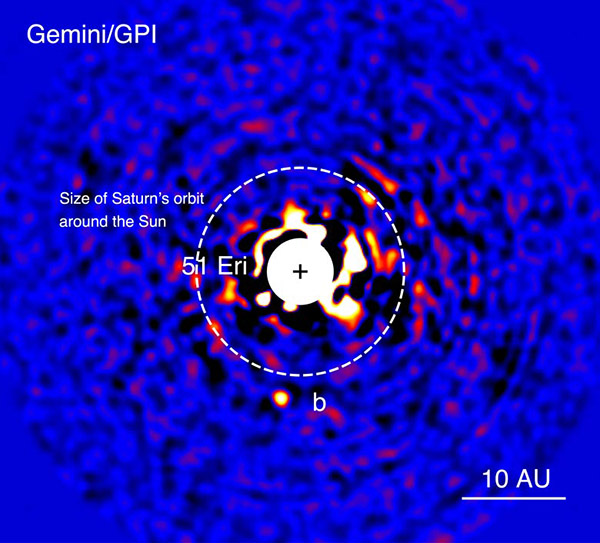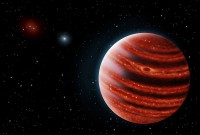Discovery image of the exoplanet 51 Eridani b taken in the near-infrared light with the Gemini Planet Imager on Dec. 21, 2014. The bright central star has been mostly removed to enable the detection of the million-times fainter planet. (Gemini Observatory and J. Rameau (UdeM) and C. Marois NRC Herzberg)
Home Discovery image of the exoplanet 51 Eridani b taken in the near-infrared light with the Gemini Planet Imager on Dec. 21, 2014. The bright central star has been mostly removed to enable the detection of the million-times fainter planet. (Gemini Observatory and J. Rameau (UdeM) and C. Marois NRC Herzberg) Discovery image of the exoplanet 51 Eridani b taken in the near-infrared light with the Gemini Planet Imager on Dec. 21, 2014. The bright central star has been mostly removed to enable the detection of the million-times fainter planet. (Gemini Observatory and J. Rameau (UdeM) and C. Marois NRC Herzberg)
Discovery image of the exoplanet 51 Eridani b taken in the near-infrared light with the Gemini Planet Imager on Dec. 21, 2014. The bright central star has been mostly removed to enable the detection of the million-times fainter planet. (Gemini Observatory and J. Rameau (UdeM) and C. Marois NRC Herzberg)



